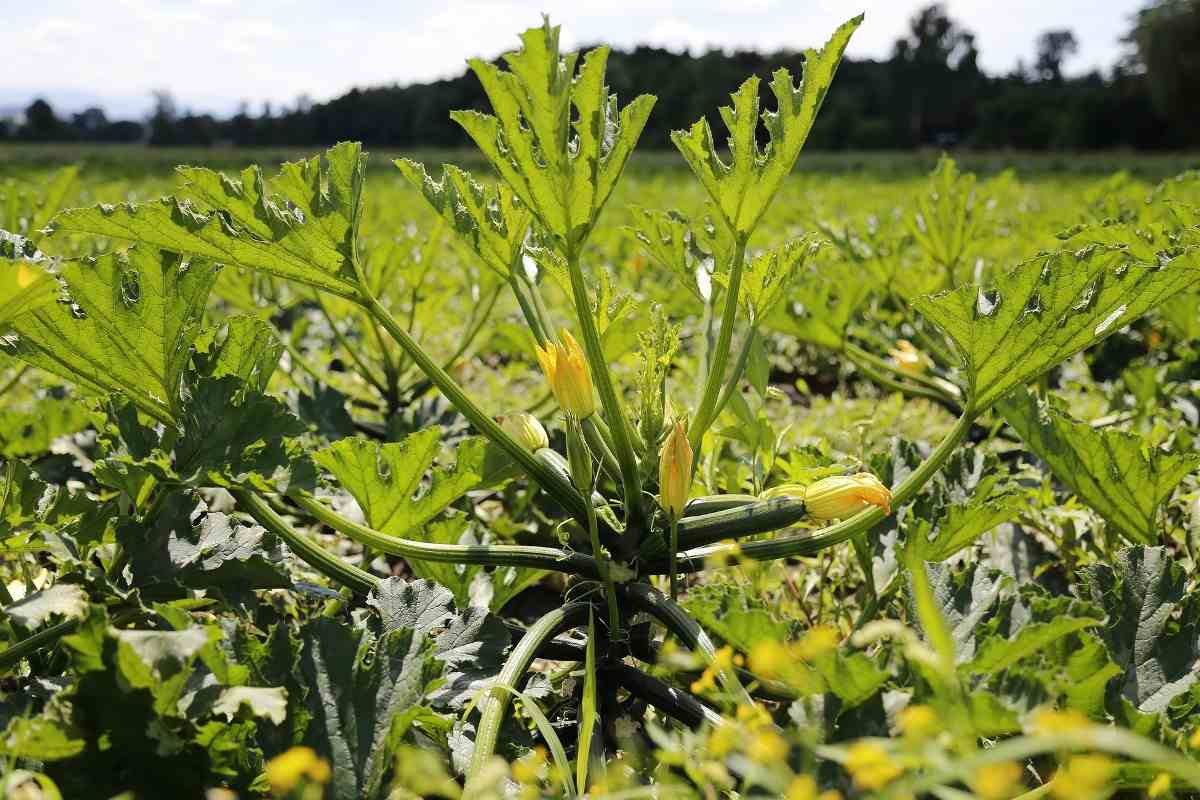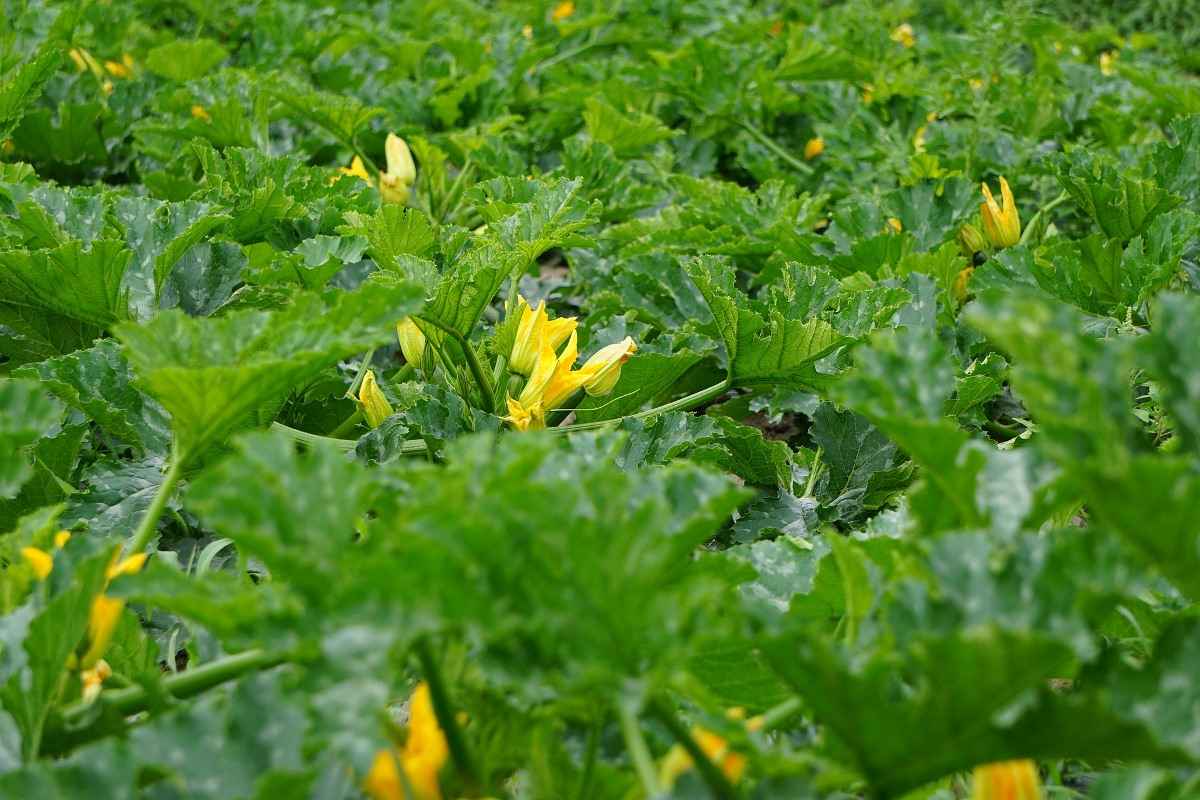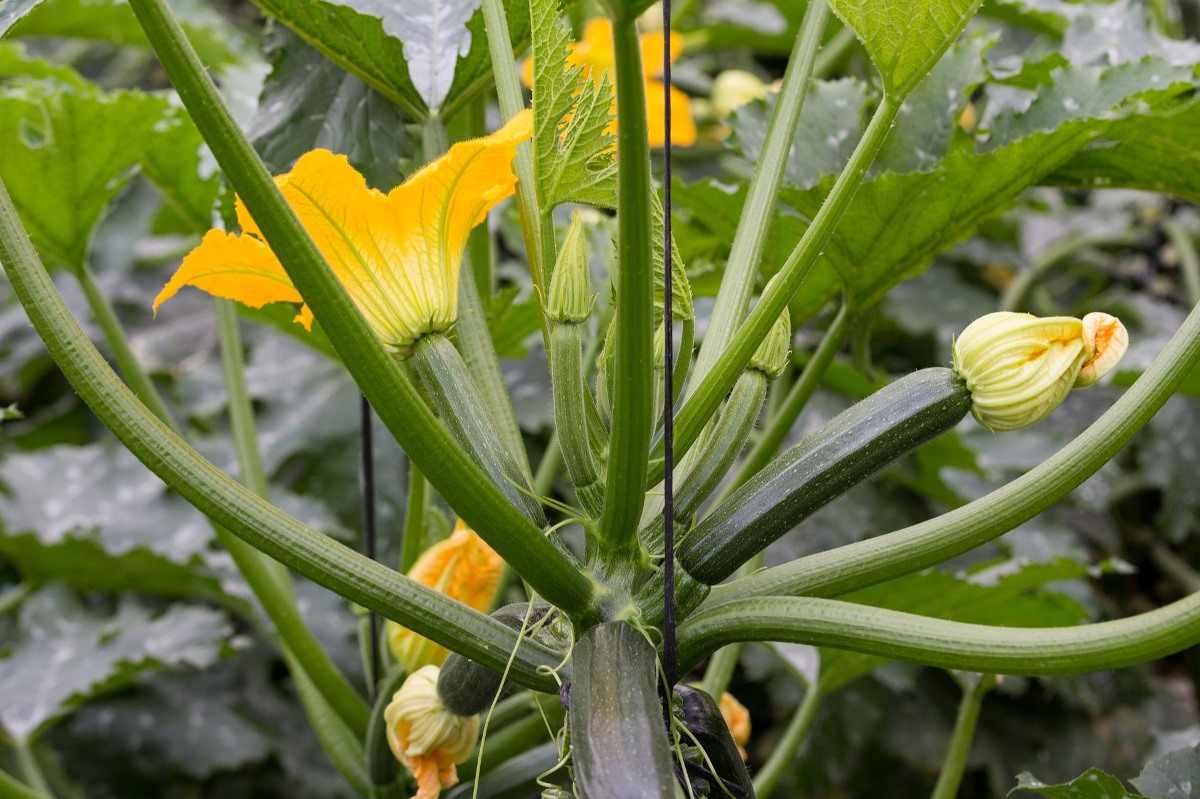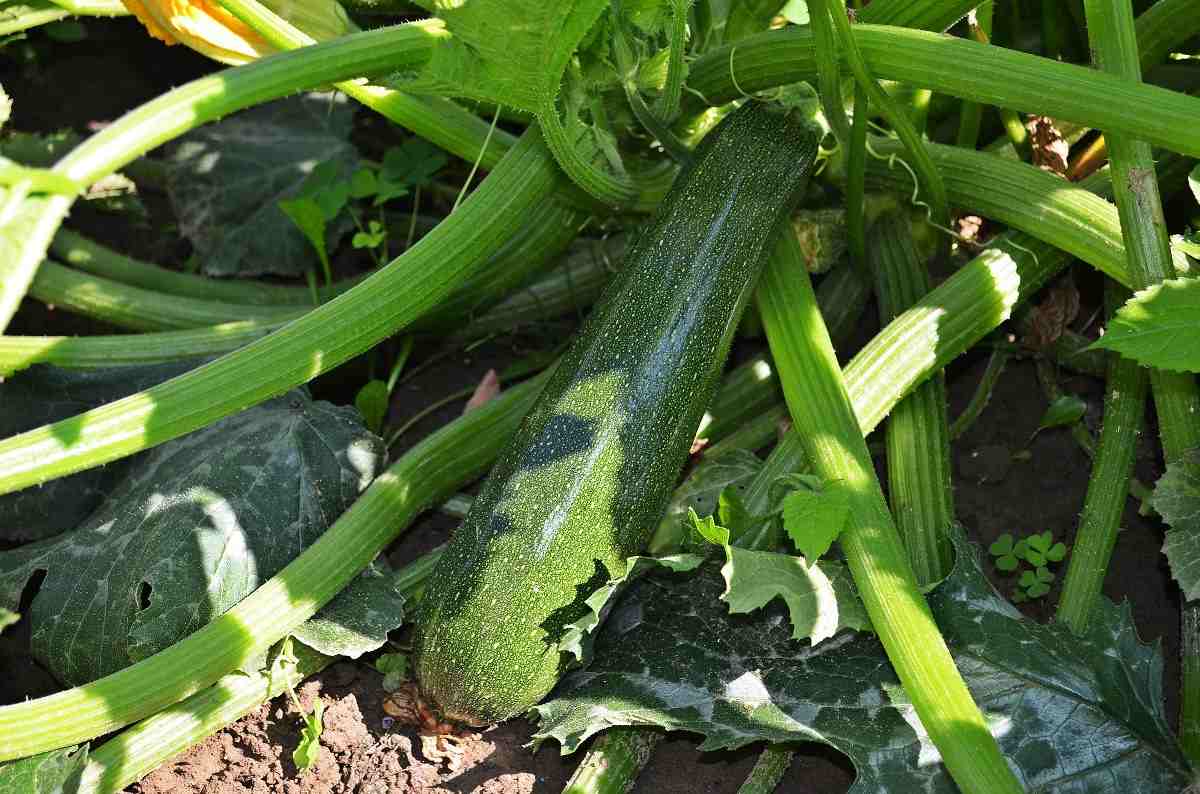Introduction to Zucchini Cultivation in India
Zucchini is also called courgette or summer squash, is a small squash belonging to Cucurbitaceae. It can be green, yellow, or light green. They have a shape similar to a cucumber but a few cultivars are of a bottle or round-shaped also. It produces tender green squashes throughout the summer growing season. These vegetables are best used during their immature stage when they measure 6 to 8 inches long and before the seeds begin to form.
A Step by Step Guide to Zucchini Cultivation, Farming Methods

Zucchini Varieties
Ambassador – cylindrical fruit, dark green early variety; 50 days to harvest.
Costata Romanesco – great tasting, nutty-flavored Italian Zucchini; grey-green with pale green flecks; 52 days to harvest.
French White – white fruit on small bushes for small gardens and 50 days to harvest.
Gold Rush – uniform, cylindrical fruit, 45 days to harvest.
Eight Ball – buttery flavour from dark green globe fruit; 40 days to harvest.
Spacemiser – high yield from the small bush, green fruit can be harvested as baby squash; and 45 days to harvest.
Seneca – cylindrical fruit on the small bush; 42 days to harvest.
The Soil and Climate Requirement for Zucchini Cultivation
- It requires at least 50 days of frost-free weather to produce mature fruits.
- Temperatures above 15°C result in healthy, quick growth. Growing sites must provide at least 6 hours of direct sunlight daily.
- Zucchini is a warm-season crop and therefore suitable for cultivation in India.
- Rapid germination and vigorous growth occur when the soil temperature reaches above 20°C and its seed germinates best from 28 to 32°C.
- The optimum monthly average temperature for good quality and higher yield of Zucchini is 22 to 29°C. It cannot tolerate frost conditions.
Soil Requirement for Zucchini Cultivation
Zucchini can be cultivated on a wide range of soils; however, they thrive best in well-drained fertile sandy loam soil. The seedlings will emerge freely in loose soil. Zucchini plants are heavy feeders so the soil must be rich in organic matter. Low lying fields should be avoided and soil has good drainage facilities. The pH level of 6.5 will result in good quality and yield of fruit. Early sowing may be made in light soils and heavier soils are better suited to planting that will be produced late in the season.

Zucchini plant doesn’t require excessively nutrient-rich soil, but it does perform best in soils that are high in organic matter with a soil pH of around 6.5. If your pH level is too far off that target mark, the plants may fail to produce quality fruit because the soil pH affects the availability of many different nutrients. You can prevent many Zucchini growing problems related to the soil by limiting the amount of nitrogen you add to your garden. Excessive nitrogen produces a lot of green leaves, often at the expense of good Zucchini production. Use only balanced, organic fertilizers on the Zucchini patch and test your soil every few years to ensure it’s healthy and well-balanced.
Zucchini Plant Pollination
Zucchini is a monoecious plant that means each plant has both male and female flowers. A female flower has a small swelling (the ovary) at the base of its short-stem. Zucchinis have both male and female flowers. You will see the male flower on the edge of the thin stem and the female flower on the end of little fruit. These flowers open in the morning. The best time to pollinate is in the morning as the air warm.
The appropriate pollination of Zucchinis is an essential phase for successful crop yield. With an incorrect method of pollination, fruits could emerge but will not grow or ripen anymore and will finally start shrinking. A male flower has a long, thin stem and is larger than the female. Bees and insects should visit the male flower then the female flower for pollination.
You should not miss this: Hydroponic Basil Farming.

Most commercially grown Zucchini cultivars are hybrids because they are heavier producers than open-pollinating types. Zucchini bears separate male and female flowers and pollination is assisted by bees. If poorly pollinated, fruits will fall off, and if partially pollinated fruit will develop unevenly.
The Seed rate and Plant Spacing in Zucchini Cultivation
The seed rate of Zucchini is approximately 1-1.25 kg/acre.
The plants are grown in rows around 1 meter apart and from 500 to 900 mm between plants within the row. This gives a population of 7500 to 11000 plants per hectare. An alternative system is to sow double rows of plants 750 mm apart with a pathway of about 1.4 meters between pairs of rows.
Seed Sowing Methods in Zucchini Cultivation
Zucchini is commercially propagated by seeds. The seeds should be planted to a depth of about 3⁄4 to 11⁄2 inches. To achieve the maximum stand, plant 2 to 3 seeds per hill and thin to a single plant, leaving only the healthiest seedling. For large commercial plantings, sow 4 seeds per foot and thin to the desired spacing. Approximately 5000 seeds are required to raise an acre of land. Plant 1 to 2 seed per hill and apply rice straw or plastic mulch to maintain soil moisture and minimize the growth of weeds. The use of mulch protects the fruits from coming in contact with the soil, thus preventing infestation by soil-borne pathogens. One week after emergence, weak seedlings are thinned out and two healthy seedlings are allowed to grow.
Zucchini can be grown in pots, containers, and backyards. Sowing could be done on raised beds or pits in the field. Zucchini is grown on raised beds and the top 5 cm of the bed should be loose so that the seedlings may emerge freely. Zucchini must be planted in rows 1.0-2.0 meters apart, and plants may be spaced 0.5 to 0.7 meters apart in rows. Transplanted may be done in moist soil and maybe irrigated after transplanting. An alternative system is to sow double rows of plants about 75 cm apart with a pathway of about 1.4 m between pairs of rows.
Sowing seeds directly in the ground;
- To sow Zucchini seed directly in the ground, be sure to wait for the last day that freezing can occur for your region before sowing.
- Direct sowing is the method to use for sowing from April until the end of May.
- Use the seed hole sowing m with a depth of around 1 inch and a distance of about 24 to 32 inches between seed holes.
- When the plants reach a height of about 3 to 4 inches, thin them so that they may develop normally.
Manures and Fertilizers Requirement in Zucchini Cultivation
Fertilizer requirement mainly depends on the nutritional status of the soil. Apply 1.5 to 2 quintals farmyard manure at the time of field preparation. The basal dose about 25 kg of NPK for an acre and later stages of growth 20 kg has to spray in 4 split doses through drip irrigation. After plant pollination, a 13:0:45 ratio of NPK is applied through drip irrigation.
Although Zucchini plants can grow well in rich soil amended with compost, most garden beds require additional fertilization for best production. Applying 2 cups of about 16-16-8 fertilizer per 50 square feet of the garden before you plant supplies initial nutrients. Work the fertilizer into the soil with the compost. The zucchini plant benefits from additional nitrogen once it begins producing vines and flowers.
Irrigation Management in Zucchini Cultivation
Zucchini plant requires frequent and consistent watering throughout the growing season. Water the crop most diligently during planting, vegetative, flowering, and fruit set stages. Keep the soil moist consistently and yield will suffer if the crop does not get enough moisture.
Apply first irrigation immediately after sowing or planting i.e. on 3rd day of seed sowing or planting. Thereafter irrigate once a week in the summer season and as per requirement in the rainy season. Frequent irrigations can be applied in dry and drought conditions for higher yield.
Avoid irrigation after fruit maturity. Drip irrigation can be adopted for better water management. It is effective in maintaining even water supply. Furrow and overhead irrigation will lead to more fungal and mildew problems compared with drip because the foliage is more likely to be wet for an extended period. The right amount of water should be applied. Too little amount of water will stress the Zucchini plants and too much can lead to leaching of nutrients and increased risk of disease problems. Avoid overhead watering. This results in wet foliage, which is more prone to fungal diseases. Spacing plants about 2 feet apart in rows further minimizes fungal issues by allowing air to circulate freely around the plants.
Pests and Diseases Management in Zucchini Cultivation
The common Zucchini plant problems are caused by cucumber beetles. The striped cucumber beetle has black and yellow colour spots on its back. The spotted cucumber beetle has a yellow back with black colour spots. They chew on young Zucchini plant leaves and stems. Cucumber beetles carry wilt diseases from plant to plant. Fortunately, these pests can be controlled with common insecticides like sprays and dust. Diazinon and Malathion are common chemicals that will kill cucumber beetle problems. Other minor pests include vine Borers and squash bugs.
Squash leaves are highly sensitive to powdery mildew disease. This is one of the most common issues with Zucchini and arises when leaves get moisture on them in warm weather, which doesn’t dry off on time. This moist, warm environment allows the powdery mildew to flourish. Other main diseases include downy mildew, septoria leaf spot. Viral diseases such as squash mosaic virus and cucurbit stunting disorder. To avoid these diseases practice crop rotation and clean up the previous year’s debris, which may harbour disease and pests that transmit disease. Prevent insects that introduce viruses during feeding with insecticidal soaps or quick blasts of water. Remove the leaves that are infected with powdery mildew and other fungal diseases to prevent spread. Do not compost these, as some fungal diseases will persist. Choose disease-resistant varieties of Zucchini.
Use copper dust or spray every 10 days to keep many fungal diseases in check. Avoid watering the leaves of Zucchini from above. This keeps leaves wet and allows fungal spores to bloom. Drip irrigation is more useful for target watering and to keep leaves in good condition.
When and How to Harvest Zucchini
- For better fruit quality, harvesting must be done at the right stage. Zucchini tastes best when they reach 4 to 6 inches in length.
- Most Zucchini varieties are ready for first picking 40-50 days after sowing. Zucchini develops very fast after flowering, so they should be harvested before the rind begins to harden.
- Zucchini needs to be picked every second day to maintain the desired fruit size because the fruit soon becomes too large due to its rapid growth. Regular picking prevents the formation of seed and stimulates further fruit set.
- Early picking increases crop yield because regular harvesting encourages the plant to continue fruit production. If fruit becomes large or rots on the vine, fruit production halts and overall yield declines. Cut the fruits off the vine rather than breaking them off.
Zucchini Yield per Acre
In case if you miss this: Organic Dates Farming.

One Zucchini plant can produce up to 40 fruits a season if properly cared for.
The average yield of Zucchini is approximately 8000 kg/acre.
Commonly Asked Questions about Zucchini Cultivation
How many Zucchini do you get from one Zucchini plant?
One Zucchini plant can produce 6 to 10 pounds of Zucchini for one growing season.
How long does it take for Zucchini plants to grow?
Zucchini generally takes about 35 to 55 days from planting until harvest.
Why Zucchini plant leaves turning yellow and dying?
Cold weather and too much moisture are among many potential causes for yellow leaves on plants. Powdery mildew disease can also cause yellowing, typically on the plant’s oldest leaves. Pests including the squash vine borer and squash bugs can make the plant leaves yellow and wilt.
What is the best fertilizer for Zucchini?
An ideal Zucchini plant fertilizer will contain nitrogen. An all-purpose food like 10-10-10 is sufficient for the Zucchini plant needs. They contain plenty of nitrogen to facilitate healthy plant growth as well as necessary potassium and phosphorus to boost fruit production.
How often should Zucchini be watered?
Keep the soil evenly moist. The critical time for watering is during bud development and flowering.
In case if you are interested in this: Growing Ridge Gourd in the Backyard.
Hi, I am looking for profit and loss for zucchini farming, like the way you showed for okra, if you could mention the overall expenses for Zucchini farming per acre will be really helpful
Good information sir you tell me where are witch company seeds is best.
how i can get seeds?